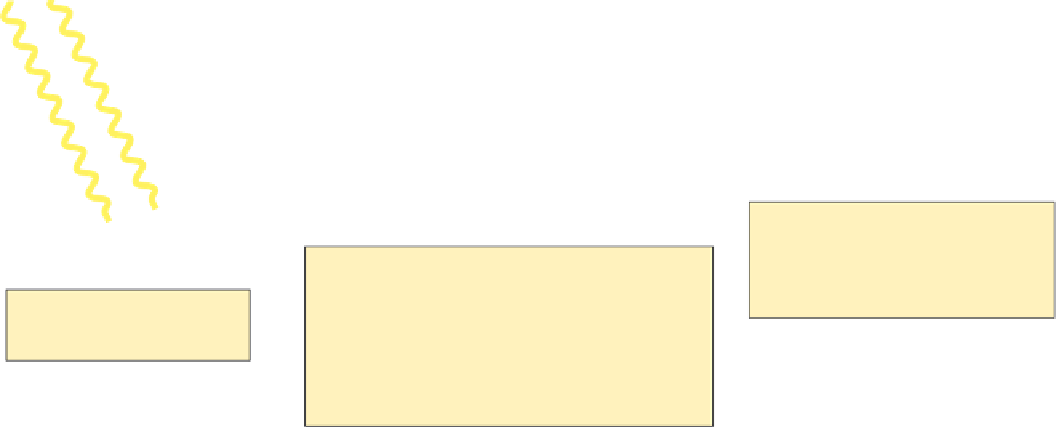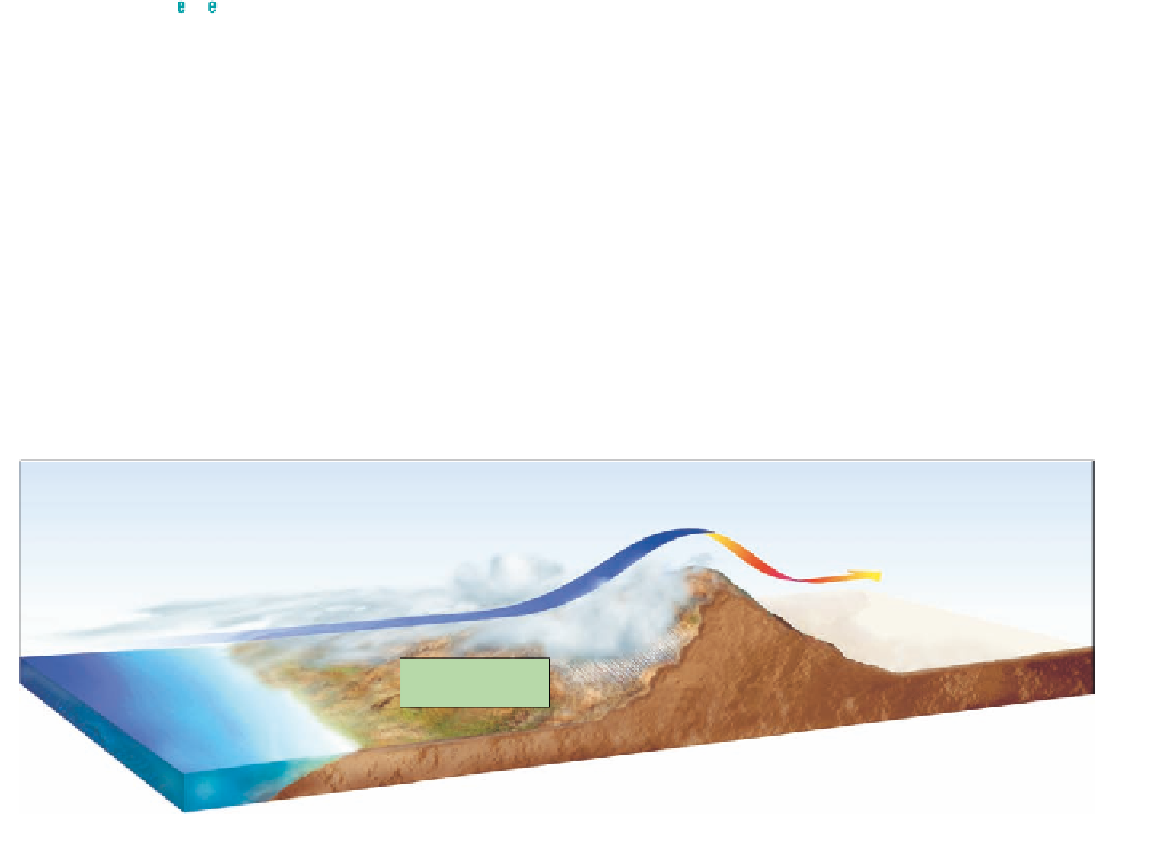Environmental Engineering Reference
In-Depth Information
(c)
As concentrations of greenhouse
gases rise, their molecules absorb
and emit more infrared radiation,
which adds more heat to the lower
atmosphere.
The earth's surface absorbs much of the
incoming solar radiation and degrades it to
longer-wavelength infrared (IR) radiation, which
rises into the lower atmosphere. Some of this IR
radiation escapes into space as heat, and some
is absorbed by molecules of greenhouse gases
and emitted as even longer-wavelength IR
radiation, which warms the lower atmosphere.
(b)
Rays of sunlight penetrate
the lower atmosphere and
warm the earth's surface.
(a)
Active Figure 5-5
Natural capital:
the
natural greenhouse effect.
Without the atmospheric warming provided
by this natural effect, the earth would be a cold and mostly lifeless planet. When concentrations of greenhouse
gases in the atmosphere rise, the average temperature of the troposphere rises.
See an animation based on
this figure and take a short quiz on the concept.
(Modified by permission from Cecie Starr,
Biology: Concepts
and Applications,
4th ed., Pacific Grove, Calif.: Brooks/Cole, 2000.)
mountains interrupt the flow of prevailing surface
winds and the movement of storms. When moist air
blowing inland from an ocean reaches a mountain
range, it cools as it is forced to rise and expand. The air
then loses most of its moisture as rain and snow on the
windward (wind-facing) slopes.
As the drier air mass flows down the leeward
(away from the wind) slopes, it draws moisture out of
the plants and soil below. The lower precipitation and
the resulting semiarid or arid conditions on the lee-
ward side of high mountains create the
rain shadow
effect
(Figure 5-6), sometimes leading to the formation
of deserts. For example, in the Sierra Nevada moun-
tains in North America, about five times more precipi-
tation falls on the side of the range facing the wind as
on the side facing away from the wind.
Cities also create distinct microclimates. Bricks,
concrete, asphalt, and other building materials absorb
and hold heat, and buildings block wind flow. Motor
vehicles and the climate control systems of buildings
Prevailing winds
pick up moisture
from an ocean.
On the windward
side of a mountain range,
air rises, cools, and
releases moisture.
On the leeward side of
the mountain range, air
descends, warms, and releases
little moisture.
Dry habitats
Moist habitats
Figure 5-6
Natural capital:
the
rain shadow effect
is a reduction of rainfall on the side of mountains facing
away from prevailing surface winds. Warm, moist air in prevailing onshore winds loses most of its moisture as
rain and snow on the windward (wind-facing) slopes of a mountain range. This leads to semiarid and arid con-
ditions on the leeward side of the mountain range and the land beyond. California's Mojave Desert and Asia's
Gobi Desert are both produced by this effect.

















